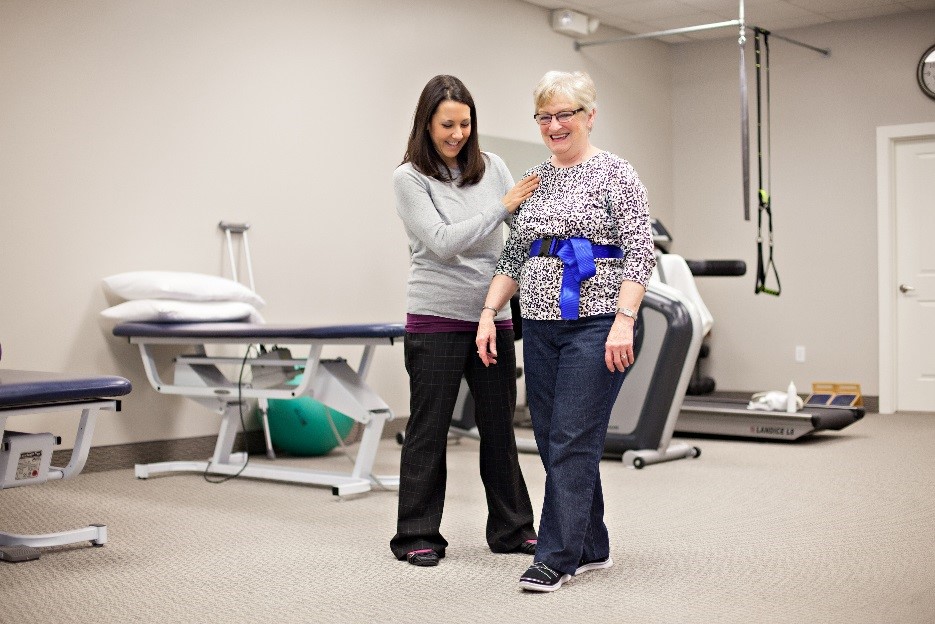How a Physical Therapist Can Help You Improve Your Balance
Have you ever lost your balance turning your head when someone calls your name? How about if you turn too quickly when you are walking? What about when you bend over to pick an object off the ground? If you answer yes to one, or all of these questions, a physical therapist may be able to help you.

According to the US Center for Disease Control and Prevention:
• 1/4th of Americans 65 years of age and older will fall this year
• Every 11 seconds, an older adult is treated in the Emergency Room for a fall
• Falls are the leading call of fatal injury among older adults
Falls, with or without injury, also carry a heavy quality of life impact. A growing number of older adults fear falling, and as a result, limit their activities and social engagements. This can result in further physical decline, depression, social isolation, and feelings of helplessness.
Factors that can affect your balance include:
• Weakness in the legs
• Decreased sensation in your feet or lower legs
• Problems with your vision
• Medication interactions
• Dizziness and Vertigo
• Other medical conditions, such as stoke, Parkinson’s disease, Multiple Sclerosis, brain injury, spinal cord injury and diabetes.
Balance problems occur when one or more of the following systems are not working properly:
1. Vision – poor vision can result from age or eye disease
2. Inner ear – also called vestibular problems can lead to vertigo
3. Muscular system – strength and flexibility decline as we age
4. Awareness of one’s own body position (proprioception) – can be caused from injury or diabetes
How can a Physical Therapist Help?
Physical therapists are experts in prescribing active movement techniques and physical exercise to improve these systems, including strengthening, stretching, proprioception exercises, visual tracking, and inner ear retraining. Your physical therapist can help treat your balance problems by identifying their causes and designing an individual treatment program to address your specific needs.
• Reduce fall risk by identifying potential hazards in your home, such as improper footwear, poor lightning, loose rugs and unrestrained pets.
• Improve mobility to help you move with more ease, coordination and confidence.
• Improve your balance by teaching you exercises and progressing them appropriately.
• Improve your strength, specifically hip and trunk muscles, by prescribing specific exercises for your needs.
• Improve flexibility and posture by teaching gentle stretches. Good posture is essential for balance.
• Instruct you on use of an assistive device, such as a cane or walker, if needed.

Balance is important for health, wellness, and happiness. There are things that you can do now to prevent a decline in your balance. To help prevent balance problems:
• Keep moving and avoid a sedentary lifestyle. Begin a regular fitness regimen and make efforts to take the stairs, walk more, or other daily activities that keep you active.
• Have yearly check-ups for vision and check for medication interactions.
• Manage any chronic diseases, such as diabetes, which has long term side effects on balance.
• Report any falls to your primary care physician or physical therapist immediately.
If you are noticing any changes with your balance, don’t hesitate to talk to your doctor or a physical therapist. There are many ways that we can all work together to improve your balance. Visit our balance and falls prevention specialty page to learn more about how physical therapy could potentially help you.
